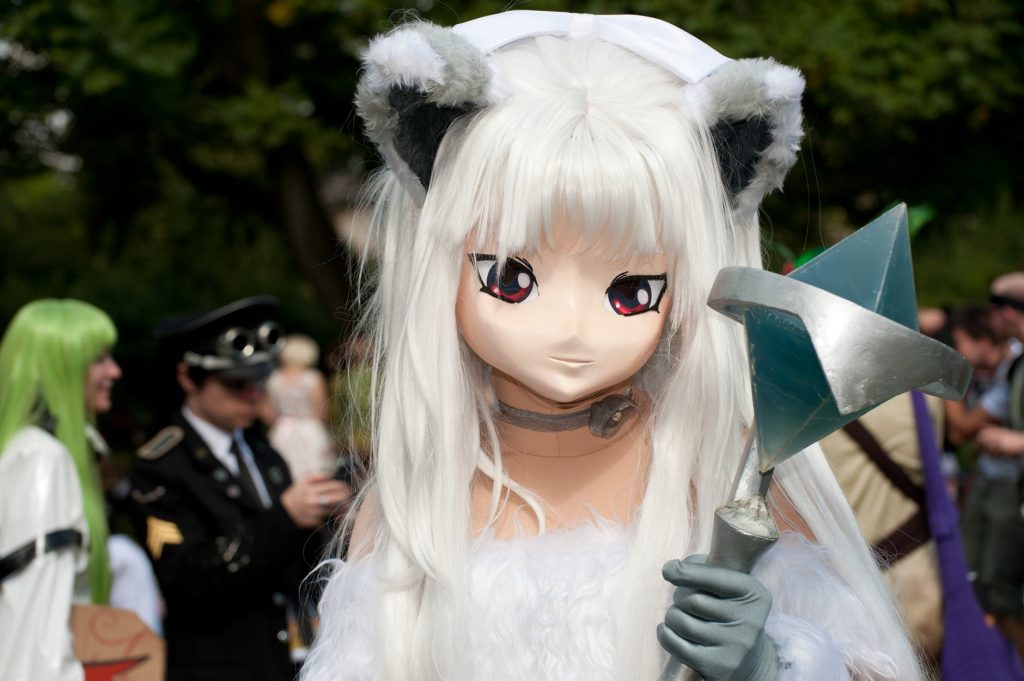
Anime is the short form of “animēshon” from the English word “animation” and refers to Japanese animated series and films. When it comes to Japan, young people often think of this part of the country’s pop culture. No wonder, because the Japanese anime industry is, after all, an important part of the culture and economy of Japan.
The first Japanese anime
There is some controversy and discussion about this topic, mainly because various competing studios naturally claim that they were first and contradict each other. But what is almost certainly, one of the first is a 5-minute silent film in black and white from 1917, called “Mukuzō Imokawa the Porter” by Ōten Shimokawa. The first Japanese anime film shown outside of Japan was “Momotarō” by Seitarō Kitayama, who also founded the first Japanese animation studio in 1921.
Development
However, the year 1963 is generally seen as the beginning of anime culture, with the anime adaptation of Osamu Tezuka’s successful manga “Astro Boy“. The series takes place in a futuristic world and is about an android that fights against evil.
As the first longer Japanese anime series, and also due to Osamu Tezuka’s strong influence in the development of the anime industry, “Astro Boy” is usually mentioned as the first anime. A year later, Tezuka’s work “Kimba, the White Lion” was also filmed, which was just as successful and also the first Japanese color anime to be broadcast. Furthermore, Tezuka also released the anime “Ribbon no Kishi” and founded the shōjo genre. Over time, various genres became increasingly popular, for example, in the late 1960s, more and more sports anime became established, especially through the “Mila Superstar” series.
The international cooperation between the Japanese animation studio Nippon Animation (then Zuiyo Enterprises) and ZDF and ORF in the mid-1970s is also interesting: popular children’s series such as “Heidi” and “Biene Maja” were created at this time. Studio Ghibli co-founders Isao Takahata and Hayao Miyazaki also contributed to the production of “Heidi”. Studio Ghibli was founded about 10 years later and has also decisively shaped the anime industry with successes such as “Princess Mononoke” and “My Neighbor Totoro”.
In the 1990s, the magical girl genre became popular thanks to the worldwide successful series “Sailor Moon”; but there were also successes of other genres, such as “Ranma 1⁄2”, “Dragonball” and “Pokémon”. Nowadays Japanese anime are known, spread and popular all over the world. There are quite a few conventions and trade fairs with anime and manga themes as well as a whole lot of franchises and merchandise, from t-shirts to nanoblock figures. Tokyo’s Akihabara district has meanwhile developed into a center of the fan community – because here you can find everything your Otaku heart desires. So that you can experience all these shops for anime, manga and electronics, as well as Japanese pop culture personally, Akihabara is also part of Go! Go! Nihon’s ” Otaku Japan ” language course.
Diversity
In the West, cartoon series are mainly made for children – this is how it started in Japan, but despite the Western model, the cartoon in Japan developed in a different direction. After a while, a wide variety of genres and topics became established, from social criticism to romance and comedy to science fiction and horror – whether young or old, there is something for everyone. In addition to the child-oriented series, more complex storylines emerged, such as in “Neon Genesis Evangelion”. Therefore, manga and anime have been recognized as a cultural and intellectual medium since the 90s, in contrast to animation in the West.
Music
Music has always played an important role in the entertainment industry. Pianists were already hired in theaters in silent film times to accompany the images of the film and to reinforce their effect. Nowadays, the soundtrack is composed for Japanese anime by well known and talented artists like Yōko Kanno, Joe Hisaishi or Kenji Kawai. Whereby they primarily write the background music and theme songs for the characters, openings and endings, on the other hand, are usually not specially composed for the anime. Instead, a suitable song by a well-known Japanese musician or idol is often chosen for the anime. The opening in particular should give an impression of the content and general atmosphere of the series, to inspire you and of course, to stay in your head.
In addition to the soundtrack CDs for Japanese anime, so-called “image albums” are also released, which contain the music and lyrics of the voice actors of different characters of an anime, as if the character was singing or speaking. This gives you a deeper insight into the personality of your favorite characters.
Conclusion
Anime is a major economic factor in Japan these days. In addition to the success at the box office and marketing on television, merchandising is an important aspect, for example for the toy industry. Console games should also be mentioned – for example the fantasy game series “Zelda” and the games about the dinosaur “Yoshi”, a companion of “Super Mario”. For companies such as Konami and Nintendo, these titles are of great importance and are target group-binding. The positive reaction to Japanese cartoons has continued. And if such great anime continues to be released, it won’t change anytime soon.